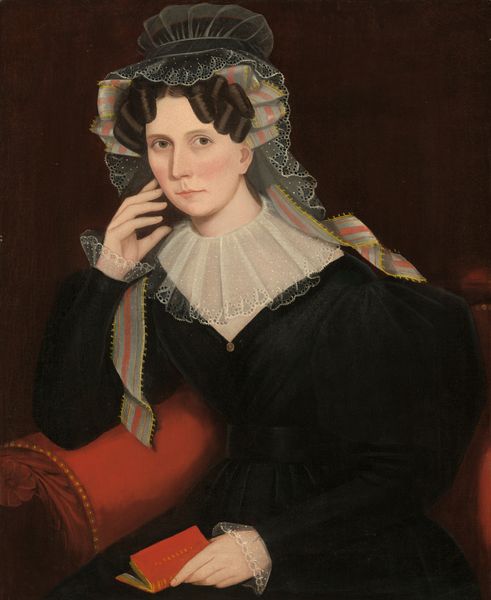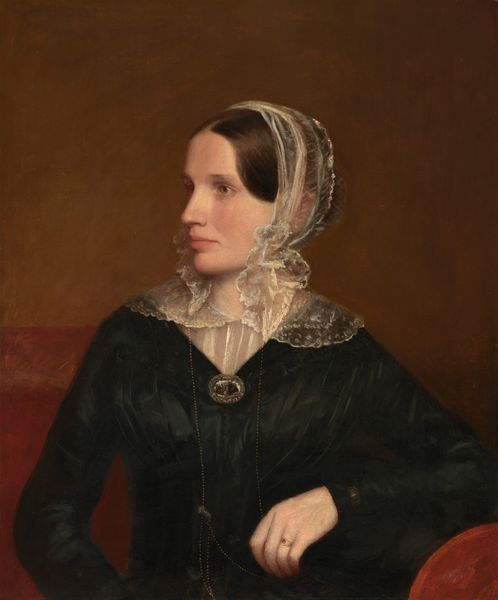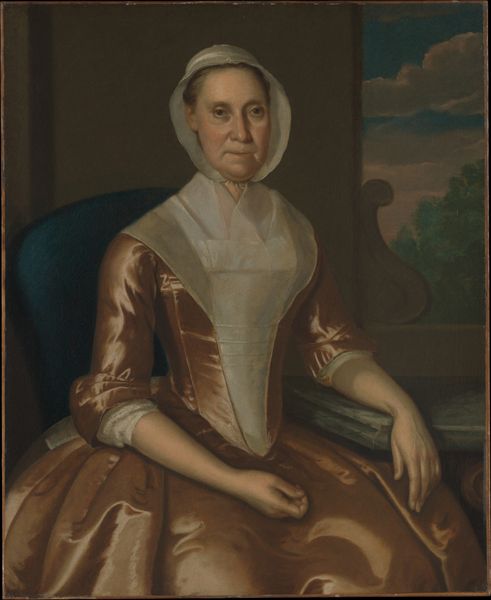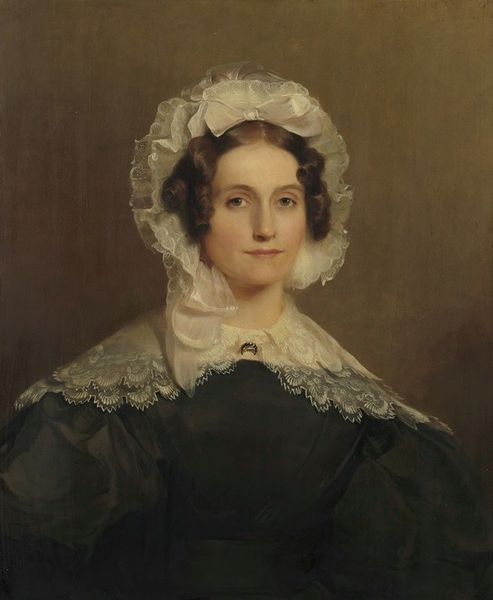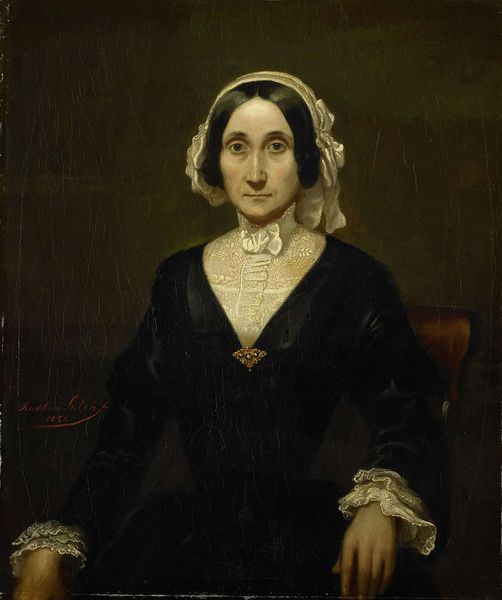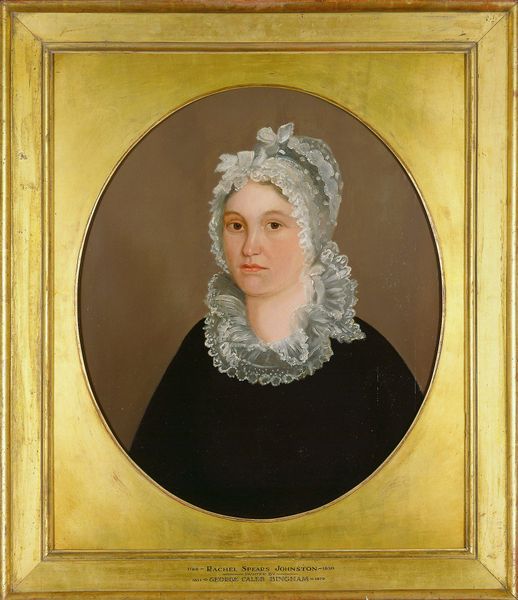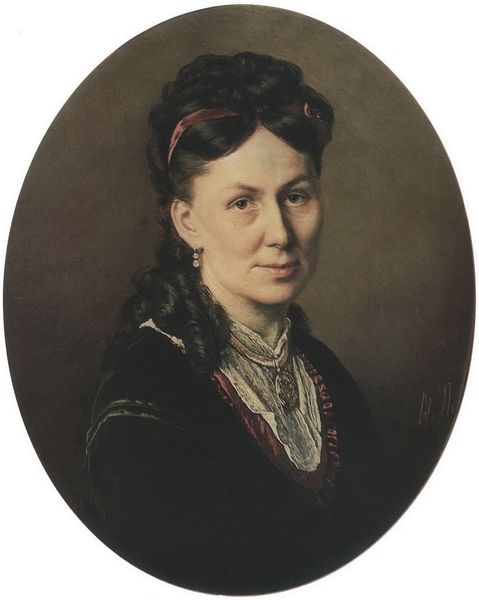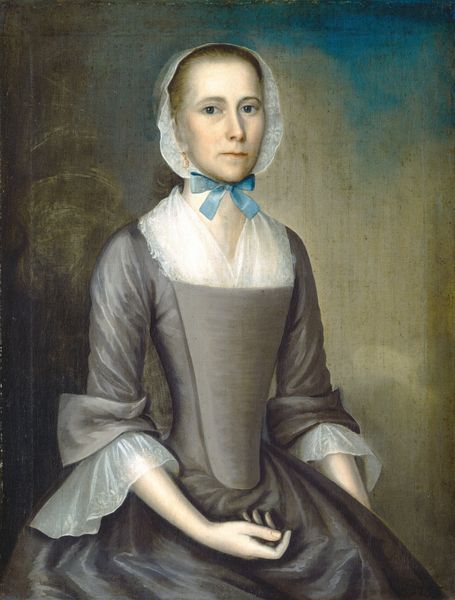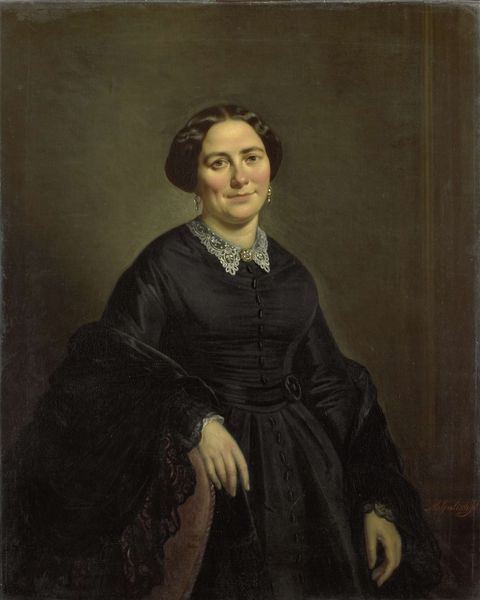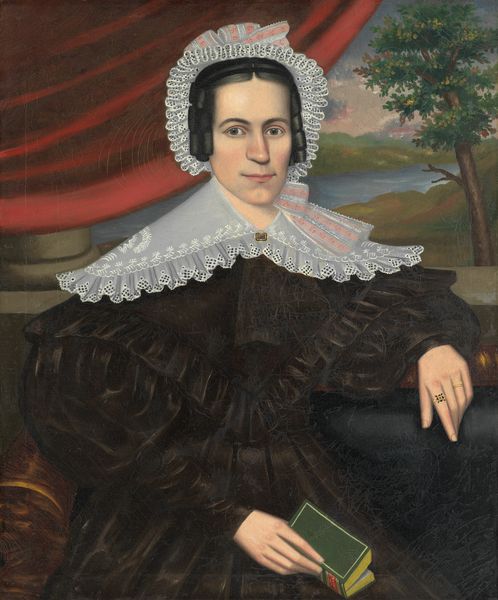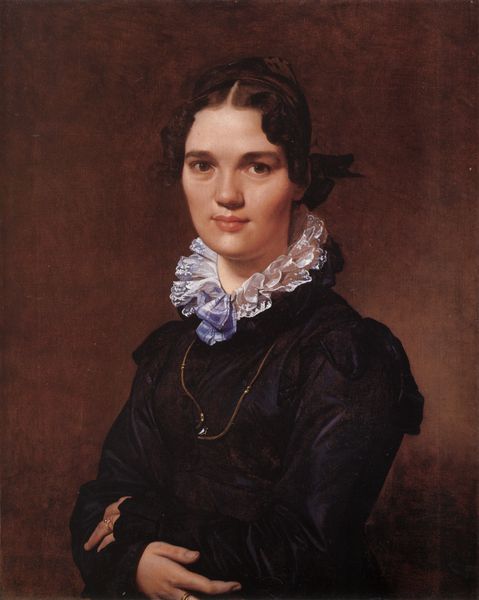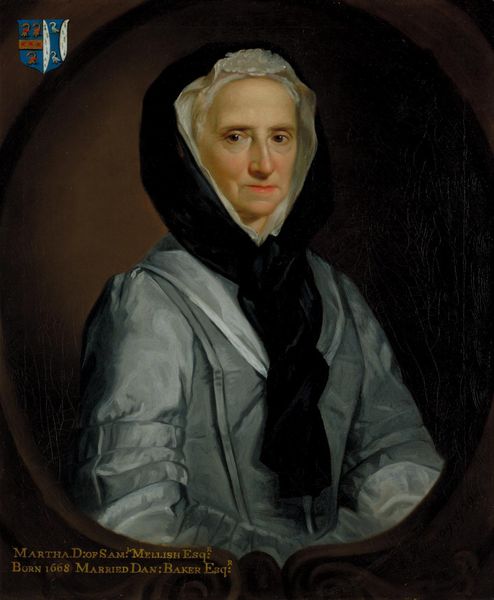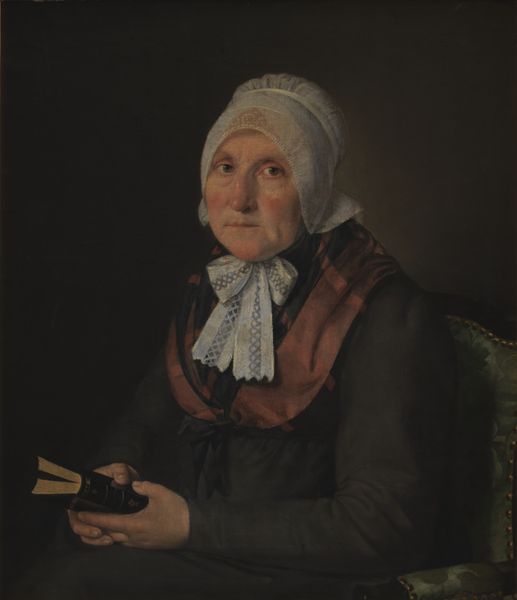
painting, oil-paint, canvas
#
portrait
#
painting
#
oil-paint
#
canvas
#
romanticism
#
academic-art
#
portrait art
#
realism
Dimensions: 44.5 cm (height) x 35 cm (width) (Netto), 56.5 cm (height) x 47.3 cm (width) x 8.4 cm (depth) (Brutto)
Editor: Here we have Wilhelm Marstrand's portrait of Frederikke Raffenberg, née Hagerup, painted in 1846, using oil on canvas. The dark tones create a rather somber mood, don't you think? I'm curious, from your perspective, what stands out about this piece? Curator: What strikes me immediately is the visible labor embedded in the materiality of the painting itself. Look closely at the precise brushstrokes meant to render fabrics, like the delicate lace trim and the heavy black shawl. These aren't simply aesthetic choices, but rather evidence of skilled craftsmanship – the artist's own labor. Editor: Yes, I see the intricacy, but how does that connect to, say, social context? Curator: Consider who had the resources for such portraits. Frederikke, likely of a privileged class, is consuming luxury goods, like the shawl, but we need to understand the networks involved. Who wove the fabric? Under what conditions? Marstrand, by depicting them, is also participating in and perhaps commenting on those material flows and class relations of 1846 Copenhagen. How might the production of such artwork have supported other forms of labor within the local economy? Editor: So, it’s not just a pretty picture, but a record of economic relationships? The labor and materials are interconnected in a way I hadn't considered before. I’ve learned that we should see more in just the surface representation. Curator: Precisely. And by examining these relationships, we can challenge conventional notions of what constitutes "high art" versus "craft." Think about where Marstrand learned his skills and where this painting eventually ended up – in a museum for public consumption!
Comments
No comments
Be the first to comment and join the conversation on the ultimate creative platform.
